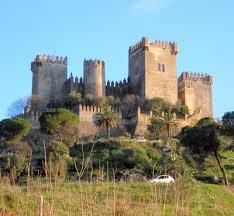Spanish Language and Spanish Culture
So you think you are an expert of all things Spanish, right? Well, then you should consider joining a Spanish immersion programme with Enforex to test your ability. This is not only an unforgettable way to experience the reality of the country, it will also be a priceless contribution to your language skills.

Spain is a vast country with immensely diverse landscapes that correspond largely to historically discrete regions often influenced by different powers or organised within autonomous states. The palpable discrepancies found between the temperaments of Spaniards from various regions have a geographical and, indeed, a geopolitical correlative that should not be ignored.
Beyond the evident, and oft repeated, statement that southern Spain developed a singular culture due to the long lasting presence of Arab states, be those arranged as petty kingdoms, the Caliphate of Cordoba or directly linked to the Caliphate of Baghdad, the fact remains that, beyond the pluralism witnessed in the south, the Christian kingdoms were anything but unified.
Originally the dominant force, the Asturian kingdom soon was displaced from its privileged position, precisely because of its remoteness from the area where the war was being waged. It was the Leonese initiative to populate the wide barren strip later known as Castile with garrison after garrison in an effort to safeguard the stability of the northwestern end of the kingdom, where Santiago's shrine lay, along with the rest of the high ranks of the court.

But first hand action in the war against the Arab 'league', of sorts, entailed for Castile first spoils in whatever they conquered. Soon the tables were turned, and castile became the most important political and economic center in the Christian portion of the Peninsula.
Meanwhile, Navarre, originally formed from the areas of Pamplona and Deyo, played an important role in the armed affair but steered clear of the political alignments that would pair Catalonia and much of Aragon with the Angevin crown of Aquitaine. Remote as these tales might seem, they still bear a tremendous influence in the regional pride that each of these regions displays, not only outwardly.
Test Your Knowledge
These are the sort of details that you can only experience in full flesh by spending some time in the country and exchanging thoughts with its people. But just to give you a little spur, here's a short test to see if you know as mush as you think you know:
(1) If you were to Learn Spanish in Salamanca, what two forms of unique architecture would you encounter most?
(2) If you were looking at the largest religious building in Spain, in what city would you be?
(3) If you are reading your Madrid city guide and it tells you to go to the famous monument by Ventura Rodríguez to celebrate the victory of a football team, would you know where to go? Where?
(4) You are strolling on your day off from classes in Barcelona and when you stumble upon the Cathedral of Santa Eulalia someone tells you the facade is typical of the Levantine Gothic. Are they right?
Alright, here are the answers: (1) Plateresque and Churrigueresque; (2) You are either in Seville, or you are perusing a Seville city guide. (3) You wouldn't, because both the Cibeles and the Neptuno were designed by Ventura Rodriguez, and that is where the victories of the Real Madrid and Atlético de Madrid are celebrated, respectively. Except Atlético don't usually win!; (4) No — the facade of the cathedral is Neo-Gothic, from the end of the XIX century.
